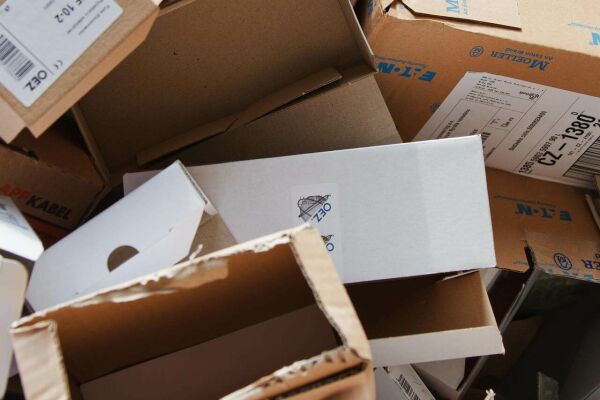Bicycles can be awkward to transport. For something that is designed for movement, their shape, size and sometimes weight, can prove somewhat challenging when it comes to moving them. Thankfully, there are few ways you can simplify this process, but there are several things you'll need to think about first.
To Disassemble or Not to Disassemble
If you are trying to figure out the best ways to ship a bicycle, the first question on your mind is probably whether to ship an assembled bicycle or take it apart. For shipping on an LTL (less-than-truckload) carrier, there are pros and cons to taking your bicycle apart. Let’s look at some things you should consider before you start disassembling your bike:
- Can you take it apart?
Some bikers can take their bikes apart like a Marine who can disassemble and reassemble his/her rifle while blindfolded. Other folks (like the writer of this article) cannot seem to change a light bulb without sustaining a major injury. If you have the skills to take apart your bike and package it, consider it as a shipping option. Otherwise, you will most likely end up doing more harm than good to your bicycle.
- What about the materials?
You will need a shipping box for your bicycle frame and handlebars, which you may be able to obtain from a bike store—if not, finding an appropriate-sized box could be a challenge. Then, you will need additional shipping boxes for parts such as the pedals, seat, rear derailleur, etc. Some of these parts will need to be packaged in heavy-duty polyethylene bags (as they are greasy), and you will not want them contaminated with dust, dirt, vermin and other environmental irritants your disassembled bike may be exposed to during shipment. The bike and parts will also need to be wrapped in bubble material or flexible polyethylene/polypropylene foam to protect against surface abrasion, nicks, dents and dings.
- Can you put it back together?
Of course, when your bike reaches its destination, it will have to be unpacked and reassembled—and the packaging boxes and materials will need to be disposed of or recycled. (The good news is all of the packaging items described above should be quite easy to recycle.)
On the plus side, because the disassembled bike is boxed, it becomes an easier load for the LTL carrier to stow on the trailer. This means you may get a lower rate for shipping it, and because it can be stacked and stowed securely, may be less vulnerable to shifting or absorbing impact while in transit.
7 Tips for Shipping an Assembled Bicycle
If you think taking your bike apart is too much work, or you are not skilled enough to do it, the best ways to ship a bicycle involve doing so in one piece. If you do decide to go this way, here the steps you’ll need to take to ship it assembled:
-
Make sure you get estimates from LTL carriers that specialize in moving bicycles and other odd-shaped household items. This ensures your bike is safe in the hands of a company with experience preparing, stowing, and handling an assembled bicycle during each stage of shipment.
-
Clean your bicycle thoroughly before preparing it for shipment. Inspect it and take photographs. If any damage is incurred when the bike is in transit, photos are very helpful in determining what type of damage occurred, and where it occurred.
-
Wrap pedals and handlebars with bubble packaging or flexible polyethylene/polypropylene foam, for surface and cushioning protection. You may want to wrap the seat as well. Secure the wrapping material with a heavy-duty box sealing tape, taking care not to let the tape come in contact with the surface of your bicycle more than necessary—the tape adhesive may transfer, which is sometimes difficult to remove.
-
Protect the frame of the bicycle against surface abrasion and dings by wrapping it in one of the materials described above. In addition to or instead of this, you can apply a plastic or paper masking film to the frame, which will provide excellent surface protection. All of these protective packaging materials are available online, and in many hardware and office supply stores. One important note: Be sure to check with a professional when selecting a paper or plastic masking film. There are many types of adhesives, and if you pick the wrong one, you either will have great difficulty in removing it or possibly have it fall off before the bicycle arrives at its destination.
-
Affix a shipping label on your wrapped bicycle, taking care to legibly write the complete shipping address (no P.O. boxes) in indelible ink, and secure the label with clear plastic box sealing tape. The clear tape will prevent the label from coming off or getting scuffed and becoming illegible.
-
For an expensive bicycle, consider crating or having a professional residential shipping company crate the item for you. Your bicycle will be shielded much better, and be far more stable on the truck and when it is being handled. Although crating involves extra expense, it will be far less than the value of a $1,000 bicycle. Note: If you crate the bicycle, make sure the LTL carrier you select to transport has the right equipment to handle it.
-
When talking to possible LTL carriers, be sure you understand their insurance and liability coverage. Again, this is extremely important for a high-value bike. All LTL carriers are required to have insurance/liability coverage, but the specific amounts and types of coverage vary quite a bit. If your carrier does not have the right coverage, your options are to negotiate additional coverage, obtain additional coverage yourself through a third party or find another carrier. We would advise you NOT to ship your valuable item without appropriate coverage.
Do you have additional questions about how to ship your bicycle? Contact us for advice, assistance, or a free estimate.




